“唐蕃古道”青海段
2024-01-16百茶客
百茶客
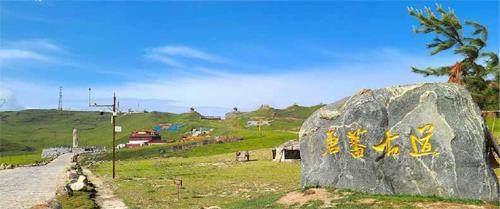
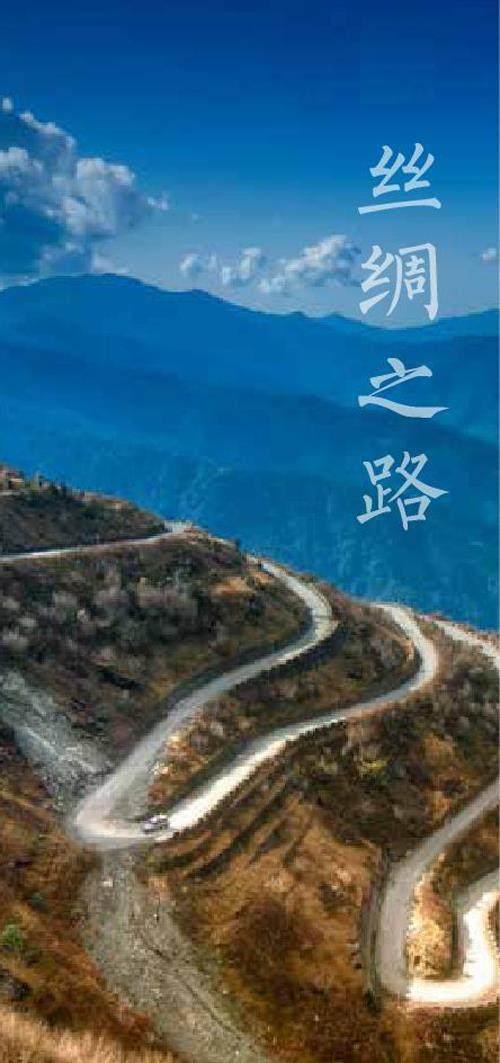
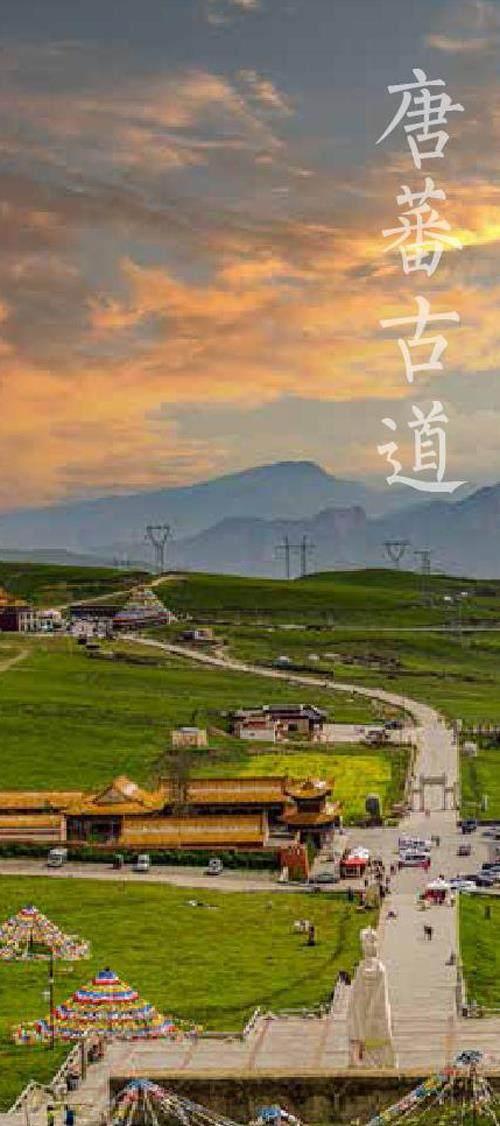
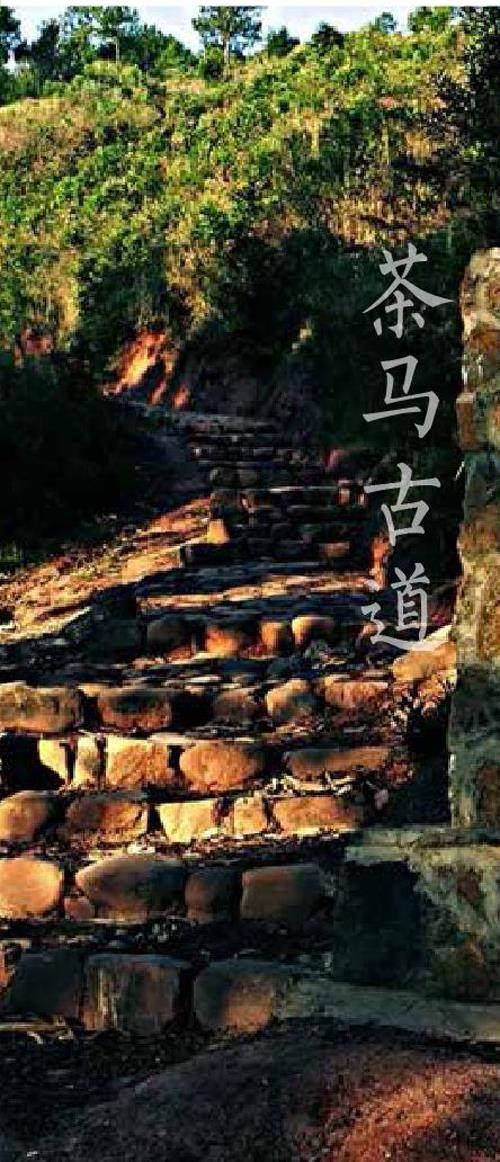
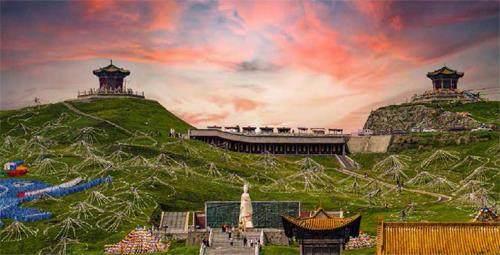
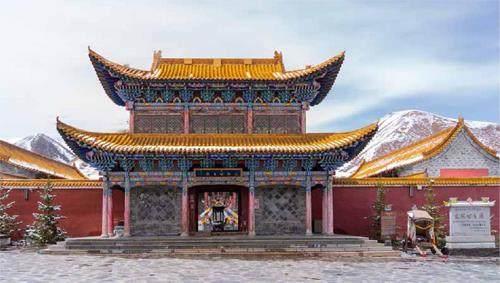
距今大约1 300 年,文成公主的车队从长安(今陕西西安)出发,一路浩浩荡荡驶向逻些(今西藏拉萨)。史书中没有她当时感受的记载,但不管怎样,文成公主对自己的远嫁及其以后的人生轨迹肯定有着清楚的认识。唐朝和吐蕃(bō)的这次联姻开创了汉藏民族交往的新历史。
About 1,300 years ago, the caravan of PrincessWencheng departed from Chang’an (now Xi’an,Shaanxi Province) and embarked on a majestic journeyto what is now Lhasa in Xizang. There is no historicalrecord of her feelings at that time, but regardless,the princess surely had a clear understanding of thesignificance of her being married off to such a farawayland and the drastic shift in her life trajectory. Throughher marriage, the Tang Dynasty and the TibetanTubo Kingdom formed a union, which marked thebeginning of a new chapter in the history of culturalexchange between the Han and Tibetan ethnicities.
我們通过陪嫁物品可以看出,当时朝廷对联姻的重视程度—陪嫁物品中除了有大量的珍宝,还有纺织品、药物、谷种、蚕种、乐器、书籍等,以及随行的一批从事手工艺的工匠和乐工。这支队伍一路西行,一路传播大唐文化,跨越了今天的陕西、甘肃、青海、四川和西藏等五个省区,全长约3 000 公里。其中,一半以上的进藏之路是在青海境内,因而文成公主西嫁对青海地区产生了深远的影响,后人把这条要道称为“唐蕃古道”。
The significance attached to the princess’s marriageis reflected in the extravagance of the dowry providedby the Tang court. In addition to numerous treasures,there were also textiles, medicines, grains, silkworms,musical instruments, books, and a group of craftsmenand musicians. The caravan travelled westward,spreading the Tang culture along the way, crossing theprovinces and regions of Shaanxi, Gansu, Qinghai,Sichuan, and Xizang, covering a total distance ofapproximately 3,000 kilometers. More than half of thejourney took place within Qinghai, where the princesslater had a profound impact. This important routecame to be known as the “Ancient Tangbo Road.”
“唐蕃古道”与“茶马古道”“丝绸之路”并称为三大古道,是唐朝以来中原内地经青海、西藏沟通尼泊尔的重要道路。据《新唐书》记载,自唐太宗贞观元年之后的200余年间,汉藏民族沿着唐蕃古道密切交往,唐朝和吐蕃使臣往来多达142次。唐蕃古道成为促进中原地区和青海、西藏民族日常交往、文化交流、贸易往来的重要纽带。双方使节、商人等频繁交会于此, 呈现出“金玉绮绣,问遗往来,道路相望,欢好不绝”的繁华场景。
The “Ancient Tangbo Road,” alongwith the “Ancient Tea-Horse Road” andthe “Silk Road,” are collectively knownas the three major ancient roads. Sincethe Tang Dynasty, it has served as animportant route connecting the centralplains of China with Nepal via Qinghaiand Xizang. According to the New Bookof Tang, for over 200 years after the firstyear of Zhenguan Reign (627) of EmperorTaizong (598–649) of the Tang Dynasty,there were 142 exchanges between Han and Tibetan envoys. The AncientTangbo Road became a vital linkthat promoted daily communication,cultural exchange, and trade betweenthe central plains and Qinghai andXizang. Diplomats and merchantsfrom both sides frequently met here.The scene of prosperity is describedin a prose in the New Book of Tang : “Isee a splendid sight of gold, jade andsilk, continuous exchanges of greetingsand goods, endless lines of people andendless waves of joy.”
文成公主离开唐朝进入吐蕃,首先要翻越青海西宁的日月山。日月山处于黄土高原与青藏高原的叠合区,是青海省内流河和外流河的天然分界线,因此当地有“日月山,日月山,海拔三千三,回头看有人烟,向前看青草滩,一望无边”的说法。相传,文成公主经过这里时,只见天地无边无际,思乡之情油然而生,便取出临行前唐太宗所赐的“日月宝镜”,不料镜中出现的竟是长安的繁华景色。公主悲喜交加,不忍细看,毅然将宝镜抛下,希望长安美景能在此地扎根。宝镜摔成了两半,摔在东边的是“日镜”,摔在西边的是“月镜”,化为今天的“日”“月”二山。
Princess Wencheng had to cross the Riyue Mountainin Xining, Qinghai on her journey to the Tibetan TuboKingdom. The mountain is located at the junction of theLoess Plateau and the Qinghai-Tibet Plateau, serving asa natural boundary between rivers flowing within andoutside Qinghai. Thus there is a local saying that goes,“Riyue Mountain, Riyue Mountain, 3,300 meters high /looking back, signs of man / looking forward, allgrasslands as far as the eyes can see.” Legend has it thatwhen Princess Wencheng passed through this area,finding herself surrounded by an infinite expanse ofsky and land, she became stricken by homesickness.So she took out the “Riyue Treasure Mirror” bestowedupon her by Emperor Taizong before her departure.Unexpectedly, what she found in the mirror was thebustling scenery of Chang’an. Overwhelmed withmixed emotions, she couldn’t bear to look any longerand resolutely cast the mirror to the ground, wishingthat the beautiful scenery of Chang’an would take root under her feet. The mirror broke into two halves.The half fell on the east side became the “Ri Mirror(meaning Mirror of the Sun),” and the half fell on thewest side turned into the “Yue Mirror (meaning Mirrorof the Moon),” which together transformed into thepresent-day Riyue Mountain.
唐蕃古道也是一條文化传播的古道。青海处于唐蕃古道的核心地段,唐朝与吐蕃交流的日益频繁,也带动了佛教文化在当地的传播。佛教从内地和吐蕃两个方向分别传入青海,由此出现了汉传佛教和藏传佛教在青海地区的交汇。当时,文成公主的车队就带有释迦佛像、佛学经典等佛教物品,一路前行,遍传佛法,所以当地人尊称唐蕃古道为“迎佛路”。
The Ancient Tangbo Road was also celebrated as aroute of cultural dissemination. Qinghai, located in thecore section of the Ancient Tangbo Road, witnessedan increasing frequency of exchanges between theTang Dynasty and the Tibetan Tubo Kingdom,which also promoted the spread of Buddhism in theregion. Buddhism entered Qinghai from both theinterior regions and the Tibetan Tubo Kingdom,giving rise to the convergence of Han Buddhism andTibetan Buddhism in Qinghai. At that time, PrincessWencheng’s caravan carried Buddhist artifacts suchas statues of Shakyamuni Buddha and Buddhistscriptures, spreading Buddhism along the way. Thisis why local people reverently refer to the road as the“Road of Welcoming the Buddha.”
自唐蕃之道兴盛以来,青海玉树地区,即古河湟地区,便逐渐成为佛教的弘传中心。藏民中享有盛誉的禅古寺便坐落在玉树。每逢禅古寺的盛大节日,都会有藏传佛教的神秘舞蹈“金刚舞”的表演。由于这种机会很难得,所以每当这个时候,远近村民都会前来观看,场面非常壮观。
The bustling of the Ancient Tangbo Road led tothe gradual growth of Yushu in Qinghai, which wasformerly known as the Ancient Hehuang Region,into a center for the teaching of Buddhism. Forexample, Changu Temple, which was much reveredby the Tibetan people, is located here. It is where themysterious dance of Vajra, a ritual dance of TibetanBuddhism, is performed. On grand festive occasions,villagers from near and far flock to enjoy the raregrandeur, creating a spectacular scene.
相传,文成公主进藏途中在玉树贝纳沟停留最久,当地的藏族首领率群众为她举行了隆重的欢迎仪式,文成公主颇为感动,在停留的日子里传授当地群众耕作、纺织等技术。据史料记载,文成公主一行途经玉树时在岩壁上雕刻了九尊佛像,这就是现存的“大日如来佛堂”,也叫“文成公主庙”。 该庙坐北朝南,前面是一条流淌的小河,背面是松柏繁盛的山峦,风景非常优美。庙四周的悬崖和面积较大的石头上都刻着数不清的藏经。庙门旁有一块碑石,记载了当年修建庙宇的历史。庙内殿堂正上方的岩壁上刻有九尊浮雕佛像,居中的主佛像便是大日如来佛像。佛像高7.3 米,面目慈祥,神态端庄,栩栩如生。
Legend has it that during Princess Wencheng’sjourney into Tubo, she made the longest stopover inthe Beinagou Valley in Yushu. The local Tibetan leaderand the people held a grand welcome ceremony forher, which deeply moved her. During her stay, shetaught the local people to farm and weave. Historicalrecords mention that while passing through Yushu,the princess’s convoy had nine Buddha statues carvedon the cliff. This is what remains today as the “GreatSun Tathagata Hall,” also known as the “PrincessWencheng Temple.” The temple faces south, with aflowing river in front and flourishing pine and cypressmountains behind, presenting a beautiful scenery. Thecliffs surrounding the temple and the large stones areengraved with countless Tibetan scriptures. Next to thetemple gate, there is a stone stele that records the historyof the temple’s construction. On the rock wall above themain hall of the temple, there are nine relief Buddhastatues, among which the central one is the statue ofthe Great Sun Tathagata. Standing at 7.3 meters tall,the Buddha statue features a compassionate face and adignified posture, appearing vivid and lifelike.
文成公主这一路走走停停,整整花费了三年时间。从唐蕃古道青海段出土的文物中,我们可以清晰地看到当时文化交流、民族融合的繁荣景象。比如,出土的文物中有大量的胡人俑。胡人来自唐朝北方和西方的游牧民族,唐朝实行开放宽容的民族政策,有很多胡人商人往来首都长安。出土的胡商俑等文物有力地证明了当时唐蕃古道上不仅有汉族和藏族的交流往来,而且有胡商之间频繁的文化交流。
Princess Wencheng and her convoy travelledon and off for a total of three years. The unearthedartifacts from the Qinghai section of the AncientTangbo Road vividly display the flourishing scenes ofcultural exchange and ethnic integration at that time.For example, among the unearthed artifacts were alarge number of Hu figurines. The Hu people comefrom nomadic ethnic groups of the northern andwestern regions during the Tang Dynasty. With itspolicy of openness and tolerance towards ethnicities,the Tang Dynasty saw frequent exchanges with Humerchants who travelled to the capital city of Chang’an.The unearthed Hu merchant figurines and otherartifacts provide strong evidence that the Han peoplenot only exchanged with Tibetan ethnicities but alsowith Hu merchants along the Ancient Tangbo Road.
“天空最亮的星星是太陽,人间最美的宝物是黄金,汉妃大姐的心灵呦,胜过太阳,胜过黄金。”这是流传在唐蕃古道上人们赞美文成公主的民歌,歌曲中的“汉妃大姐”就是文成公主。千百年来,斗转星移,朝代更迭,但文成公主的故事早已成为流芳百世的美谈。唐蕃古道在今天依旧发挥着交通运输和文化交流的重要功能,让中原内地和青藏高原紧密相连,在波澜壮阔的变迁中书写着一个又一个传奇。
“The brightest star in the sky is the sun; the most precious treasure on earth is gold. Brighter than the sun andmore precious than gold is the heart of the Han Princess.” This is a folk song praising Princess Wencheng, the “HanPrincess,” that has been passed down along the Ancient Tangbo Road. Over the centuries and amidst the changesof dynasties, the story of Princess Wencheng has become a timeless legend. Today, the Ancient Tangbo Road stillplays an important role in transportation and cultural exchange, connecting the central plains and the Qinghai-TibetPlateau closely, writing its own legendary chapters in the grand history.
